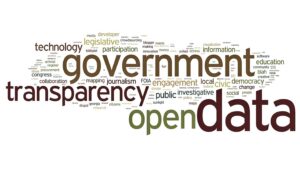 A Commitment to No-Kill Excellence
A Commitment to No-Kill Excellence
In the dynamic landscape of animal welfare, transparency and accountability serve as guiding principles, illuminating the path towards a future where every animal has the opportunity to thrive. By maintaining transparent reporting on shelter statistics, including intake, adoption, and euthanasia rates, shelters not only foster accountability and trust within the community but also gain valuable insights into areas for improvement and measure progress towards achieving no-kill goals. As we delve into the importance of implementing this strategy, let us explore the transformative power of transparency and accountability in advancing the cause of animal welfare.
The Importance of Transparency
Transparency lies at the heart of effective animal shelter management, offering a window into the operations, policies, and outcomes of shelters’ efforts to care for animals in need. By providing the community with access to accurate and up-to-date information on shelter statistics, shelters demonstrate a commitment to openness, honesty, and integrity, fostering trust and confidence among stakeholders. Transparency also enables community members to make informed decisions about supporting and engaging with their local shelter, empowering them to become active participants in the welfare of animals in their community.
Fostering Accountability and Trust
Maintaining transparent reporting on shelter statistics fosters accountability and trust within the community, holding shelters accountable for their actions and outcomes. By publicly disclosing information on intake, adoption, and euthanasia rates, shelters demonstrate a willingness to be held to a high standard of performance and outcomes, building credibility and trust among stakeholders. Transparency also creates opportunities for community members to engage with their local shelter, providing feedback, raising concerns, and collaborating on solutions to improve animal welfare outcomes.
Identifying Areas for Improvement
Transparent reporting on shelter statistics allows shelters to identify areas for improvement and implement targeted strategies to address challenges and gaps in service delivery. By analyzing trends and patterns in intake, adoption, and euthanasia rates, shelters can pinpoint areas of concern and develop tailored interventions to address root causes and improve outcomes for animals in their care. Whether it’s implementing targeted adoption events, expanding foster care programs, or enhancing community outreach efforts, transparency enables shelters to make data-driven decisions and allocate resources effectively to achieve their no-kill goals.
Measuring Progress Towards No-Kill Goals
Transparent reporting on shelter statistics serves as a vital tool for measuring progress towards achieving no-kill goals and holding shelters accountable for their performance. By tracking key metrics such as live release rates, length of stay, and euthanasia rates, shelters can assess their progress over time and benchmark their performance against industry standards and best practices. Transparent reporting also provides stakeholders with visibility into the impact of their support and advocacy efforts, inspiring continued engagement and investment in the cause of animal welfare.
Creative Implementation Strategies
While the importance of transparency and accountability in animal shelter management is clear, the challenge lies in implementing this strategy in a way that is accessible, meaningful, and effective for all stakeholders. Let us explore some creative implementation strategies that shelters can use to enhance transparency and accountability and foster a culture of openness and trust within their communities.
Interactive Data Dashboards and Reports
Interactive data dashboards and reports offer a user-friendly way to present shelter statistics and performance metrics to the community. By providing stakeholders with access to real-time data and visualizations, shelters can engage community members in a meaningful dialogue about animal welfare outcomes and empower them to track progress towards no-kill goals. Interactive features such as filters, graphs, and comparisons enable users to explore data in-depth and gain insights into trends and patterns, fostering a greater understanding of the challenges and opportunities facing their local shelter.
Community Feedback and Engagement Platforms
Community feedback and engagement platforms provide stakeholders with a forum to share their thoughts, ideas, and concerns about animal welfare issues and engage in constructive dialogue with their local shelter. By leveraging social media, online forums, and community meetings, shelters can solicit feedback, address questions, and build relationships with community members, fostering a sense of ownership and investment in the welfare of animals in their care. Community feedback platforms also serve as a valuable source of input for shelters seeking to improve their services and operations, enabling them to respond proactively to the needs and preferences of their constituents.
Transparency and Accountability Pledges
Transparency and accountability pledges offer shelters an opportunity to publicly commit to maintaining high standards of openness, honesty, and integrity in their operations and reporting practices. By signing onto a pledge or statement of principles, shelters demonstrate their dedication to transparency and accountability and invite scrutiny and accountability from their community. Pledges may include commitments to regularly publish shelter statistics, provide updates on key initiatives and outcomes, and engage with stakeholders in a transparent and responsive manner. By holding themselves to a higher standard of transparency and accountability, shelters can build credibility and trust among their constituents and inspire confidence in their efforts to save and improve the lives of animals in need.
Conclusion: A Call to Action
In conclusion, transparency and accountability are not just buzzwords in the realm of animal welfare; they are guiding principles that hold the key to achieving no-kill excellence and transforming the lives of animals in need. By maintaining transparent reporting on shelter statistics, fostering accountability and trust within the community, identifying areas for improvement, and measuring progress towards no-kill goals, shelters can create a culture of openness, honesty, and integrity that inspires confidence and collaboration among stakeholders. As we move forward on our journey towards a future where every animal has the opportunity to thrive, let us embrace the power of transparency and accountability to drive meaningful change and create a brighter future for animals in need.
Contact ed@edboks.com for more information.
